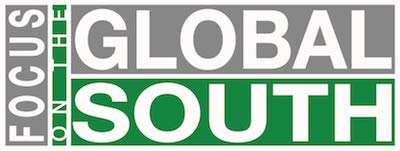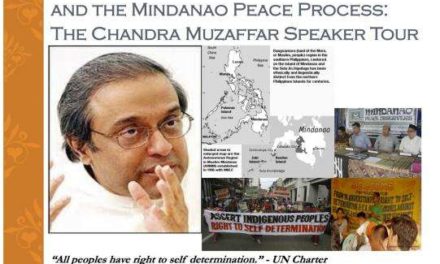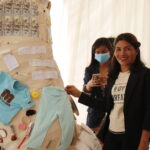by Jessica Reyes-CantosChief of StaffRep. Del R. de Guzman, Lone District, Marikina city
The footwear industry should consider itself “lucky” for being one of the few sectors where its products’ rate of duty remain unbound* under the current WTO rules. Except for ski boots which was the only item in the footwear sector our “intelligent trade negotiators” submitted for binding at 50%, all other imported footwear can enjoy flexible tariff rates outside the tariff bindings submitted to the WTO. Indeed, submitting ski boots as the only item with a bound tariff rate is a smart move, I would say, considering that the country does not produce ski boots and there is no domestic market for it. As such, importers can import all they want and we have promised not to slap a rate of duty higher than 50% for that item.
“”’””
Yet, this lucky break that the footwear sector should have enjoyed has actually disappeared in thin air with the unilateral reduction of tariff rates applied on footwear imports. Under Executive Order 334, the tariff for imported footwear is scheduled as follows:
- – 15%
- – 10%
- – 7%
- – 5%
EO 334 was superseded by another EO issued by the Arroyo administration which froze the tariff rate at its 2002 level. Thus the tariffs on imported footwear is now pegged at 10%. While some people from the Department of Trade and Industry already consider the halt in the reduction of tariff rates as a major concession to industries, let us take a look at the tariff rates that are being applied by other Asian countries on imported shoes.
China – 45%
Thailand – 40%
Vietnam – 30%
Indonesia – 25%
For specific footwear such as leather shoes (6404.2), the tariff rates are:
China – 24%
Thailand -100%
Vietnam – 50%
Indonesia – 15%
Malaysia – 15%
Recently, our shoemakers’ spirits have been lifted with the positive reception it has obtained from Congress, the Tariff Commission and the DTI. The Committee on Trade and Industry in Congress, in particular, has endorsed the passage of a resolution which urges the President to raise the tariff rate on imported shoes to 35%. The hearings in the Tariff Commission last January where the SMP and PFFI have made representations saw no objections when the sector asked for a tariff rate increase from 10 to 30%.
But all these little gains which have yet to seep down to our small shoe manufacturers are in danger of being easily be wiped out after Cancun.
Should our government negotiators agree, hook, line and sinker to the proposed Non-Agricultural Market Access or NAMA which is a proposal for Cancun mostly be developed countries, what happens?
First, the footwear sector will now be subject to bound rates as it is part of the remaining 35% of the total tariff lines that remain unbound but for which developed countries are clamoring for full binding come Cancun.
, the footwear sector will now be subject to bound rates as it is part of the remaining 35% of the total tariff lines that remain unbound but for which developed countries are clamoring for full binding come Cancun.
Second, the base rate for commencing tariff reductions shall only be twice the MFN applied rate in 2001. Please note that the 2001 applied tariff for footwear is 15%. This means that should we accede to the NAMA modalities, the starting bound rate for footwear will just be 30%.
, the base rate for commencing tariff reductions shall only be twice the MFN applied rate in 2001. Please note that the 2001 applied tariff for footwear is 15%. This means that should we accede to the NAMA modalities, the starting bound rate for footwear will just be 30%.
Third, we are giving out trade partners the assurance that we will not be suddenly raising tariff rates on imported footwear beyond 30%.
, we are giving out trade partners the assurance that we will not be suddenly raising tariff rates on imported footwear beyond 30%.
Fourth, should we apply the modalities formula where the new bound rates is dependent on an agreed ß where the lower the ß the lower the new bound rates, then we might end up with just a tariff rate of 20% with a ß value of 3, the highest possible value which at the moment is being contemplated in the draft modality.
, should we apply the modalities formula where the new bound rates is dependent on an agreed ß where the lower the ß the lower the new bound rates, then we might end up with just a tariff rate of 20% with a ß value of 3, the highest possible value which at the moment is being contemplated in the draft modality.
Finally, the latitude that the footwear sector could possibly enjoy not by going through the normal safeguard measures route but by simply invoking section 401 of the Tariff and Customs Code in raising tariffs will be a foregone opportunity.
, the latitude that the footwear sector could possibly enjoy not by going through the normal safeguard measures route but by simply invoking section 401 of the Tariff and Customs Code in raising tariffs will be a foregone opportunity.
The fact is, those whose applied rates are high in 2001 such as the countries that I have mentioned before will still be able to enjoy the doubling of their tariff rates if their footwear sector is among their unbound tariff lines prior to Cancun.
Developed countries, on the other hand, are not likely to be affected by tariff reduction. The average basic duty for non-agricultural goods in the developed world is below 3 to 4 per cent.
But the developing countries must have the imperatives of protecting certain sectors such as small-scale industries. Our footwear sector is 97% small scale and family owned and together with its allied industries employ close to 300,000 people.
For the industries in the developing countries, lacking in the resources and infrastructure, tariff remains the single-most important instrument in pursuing an industrial policy. And if may add, the deluge of shoe imports that the Bureau of Customs have allowed to come in at grossly underdeclared values has not just rubbed salt, but poured acid on the already wounded industry. Imagine, imported leather shoes declared at 76 cents a pair! Even with a devalued peso of P55:$1, it is only worth P41.80 when converted into our local currency.
We have to say no to the NAMA modalities at this time when we have yet to see a thoroughgoing review of the current policies and its impact, not just on the shoe industry but on the other industries as well.
We have to ask not for a moro-moro review (which is what happened in the GATT hearings in the Senate when we acceded to the WTO in 1994) but a transparent, democratic and participative review process before we let go of the remaining 35% of our tariff lines.
Finally, we have to review our existing laws that are supposedly GATT-allowable safety nets such as the safeguard measures as we seem to have shot ourselves on the foot with that law. But that is a separate story altogether. For now, what is more important is that our trade negotiators don’t sell us down the drain in Cancun.








